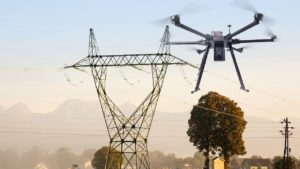
- Plan flights based on good airspace intelligence. When you are managing projects at the enterprise level, it’s not enough to rely on the FAA’s app or your understanding of airspace conditions. Every operator on your team needs to understand where they can fly, and how to legally navigate restrictions when required. Make sure that your operators are working with an up-to-date, dynamic planning tool – one that takes changing regulations and conditions into consideration. For example, the Airspace Map provided by leading drone operations platform Skyward not only color codes and clearly identifies airspace restrictions, but also provides suggestions to pilots for requesting permissions.
- Log everything. It’s not enough simply to record your flights. Good drone fleet management requires that you track all of your aircraft, pilot flight hours, and details about projects. Detailed logging isn’t just good risk management; it allows enterprise to manage costs, calculate returns and forecast future projects.
- Store your Documents. All the documents. In any complex regulatory environment, storing documents becomes a critical part of the workflow. For enterprise drone projects, you’ll need to track more than just contracts and payments. All airspace waivers and authorizations, insurance policies, permissions and pilot’s licenses need to be easily accessible. Invest in a good, easy to use system – ideally one that integrates with your other management tools – and keep it meticulously.
- Keep Up to Date with Evolving Regulations. It isn’t easy, but it’s necessary. Use all of the tools available to help: dynamic flight planning and airspace intelligence tools, the knowledge base available through your vendor portfolio, and a robust network of other drone professionals. Make it someone’s job to follow developments in the regulatory environment.
- Pull it all Together. An operating procedures manual, complete with checklists, is critical for drone projects. And having all of the pieces of your risk management program together – flight planning tools, logs, documents, safety and procedures manual, and proofs of process – is the best way to ensure that you’ll be able to effectively manage both your client and company needs.
While managing enterprise drone projects isn’t simple, it can be easy. Commercial drone management solutions have done a good job integrating systems and making it easy for operators to customize solutions to match their workflows. Put a good system in place now –save significant hassle and expense later.
This post was sponsored by Skyward.
Alan is serial entrepreneur, active angel investor, and a drone enthusiast. He co-founded DRONELIFE.com to address the emerging commercial market for drones and drone technology. Prior to DRONELIFE.com, Alan co-founded Where.com, ThinkingScreen Media, and Nurse.com. Recently, Alan has co-founded Crowditz.com, a leader in Equity Crowdfunding Data, Analytics, and Insights. Alan can be reached at alan(at)dronelife.com
